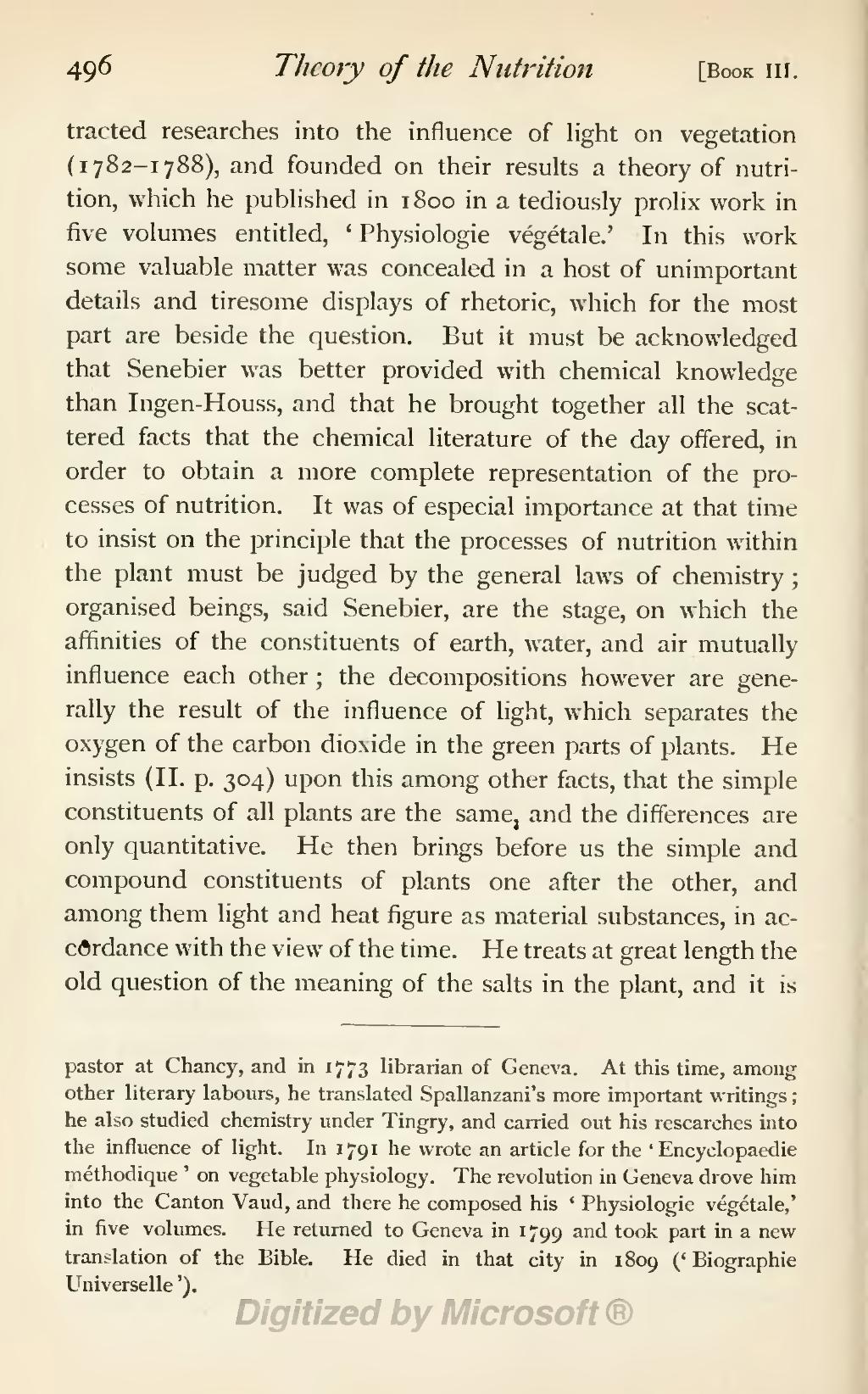tracted researches into the influence of light on vegetation
(1782-1788), and founded on their results a theory of nutrition, which he published in 1800 in a tediously prolix work in
five volumes entitled, 'Physiologie végétale.' In this work
some valuable matter was concealed in a host of unimportant
details and tiresome displays of rhetoric, which for the most
part are beside the question. But it must be acknowledged
that Senebier was better provided with chemical knowledge
than Ingen-Houss, and that he brought together all the scattered facts that the chemical literature of the day offered, in
order to obtain a more complete representation of the processes of nutrition. It was of especial importance at that time
to insist on the principle that the processes of nutrition within
the plant must be judged by the general laws of chemistry;
organised beings, said Senebier, are the stage, on which the
affinities of the constituents of earth, water, and air mutually
influence each other; the decompositions however are generally the result of the influence of light, which separates the
oxygen of the carbon dioxide in the green parts of plants. He
insists (II. p. 304) upon this among other facts, that the simple
constituents of all plants are the same, and the differences are
only quantitative. He then brings before us the simple and
compound constituents of plants one after the other, and
among them light and heat figure as material substances, in accordance with the view of the time. He treats at great length the old question of the meaning of the salts in the plant, and it is
pastor at Chancy, and in 1773 librarian of Geneva. At this time, among other literary labours, he translated Spallanzani's more important writings; he also studied chemistry under Tingry, and carried out his researches into the influence of light. In 1791 he wrote an article for the 'Encyclopaedie methodique' on vegetable physiology. The revolution in Geneva drove him into the Canton Vaud, and there he composed his 'Physiologie végétale,' in five volumes. He returned to Geneva in 1799 and took part in a new translation of the Bible. He died in that city in 1809 ('Biographie Universelle').

